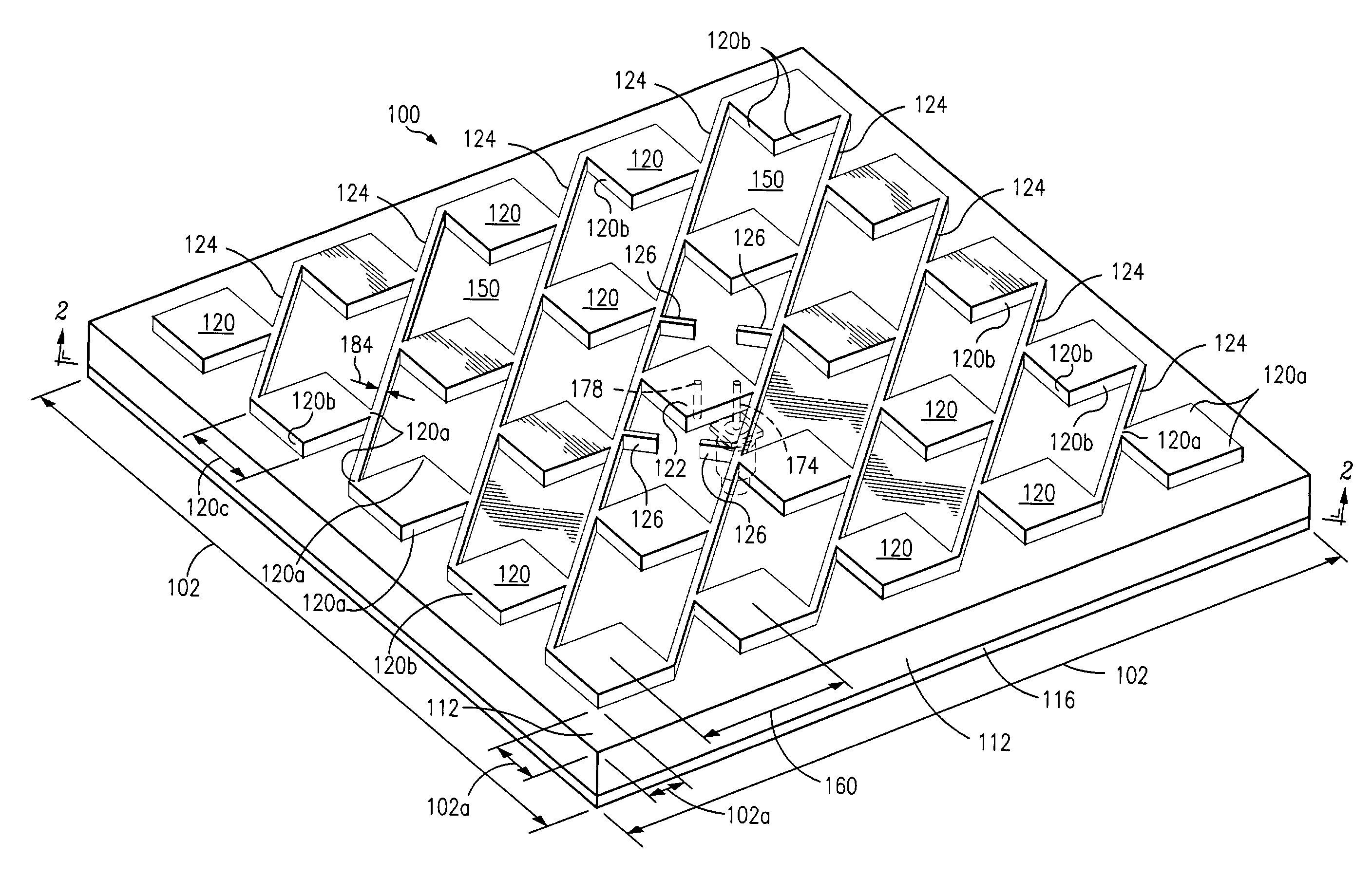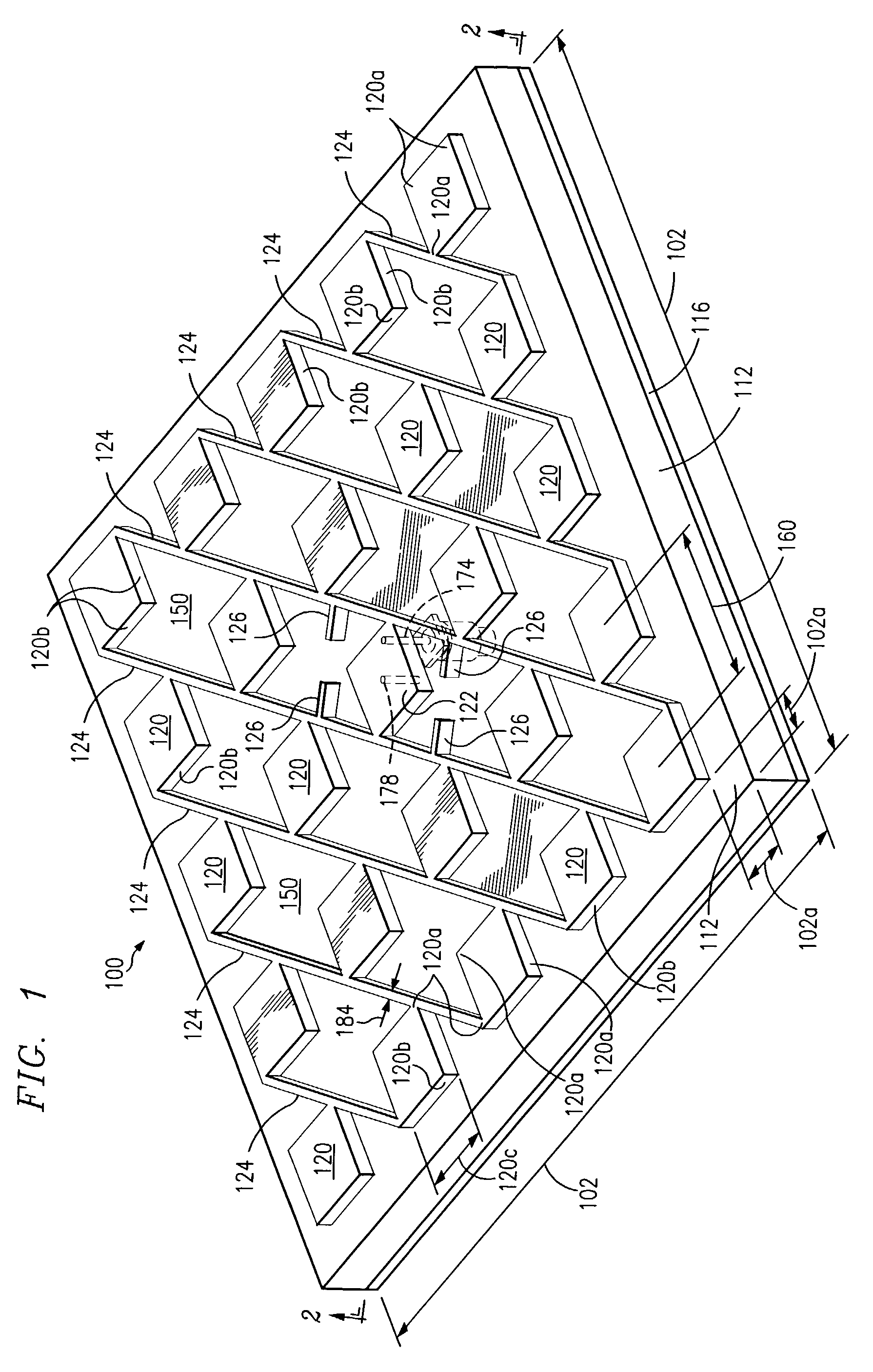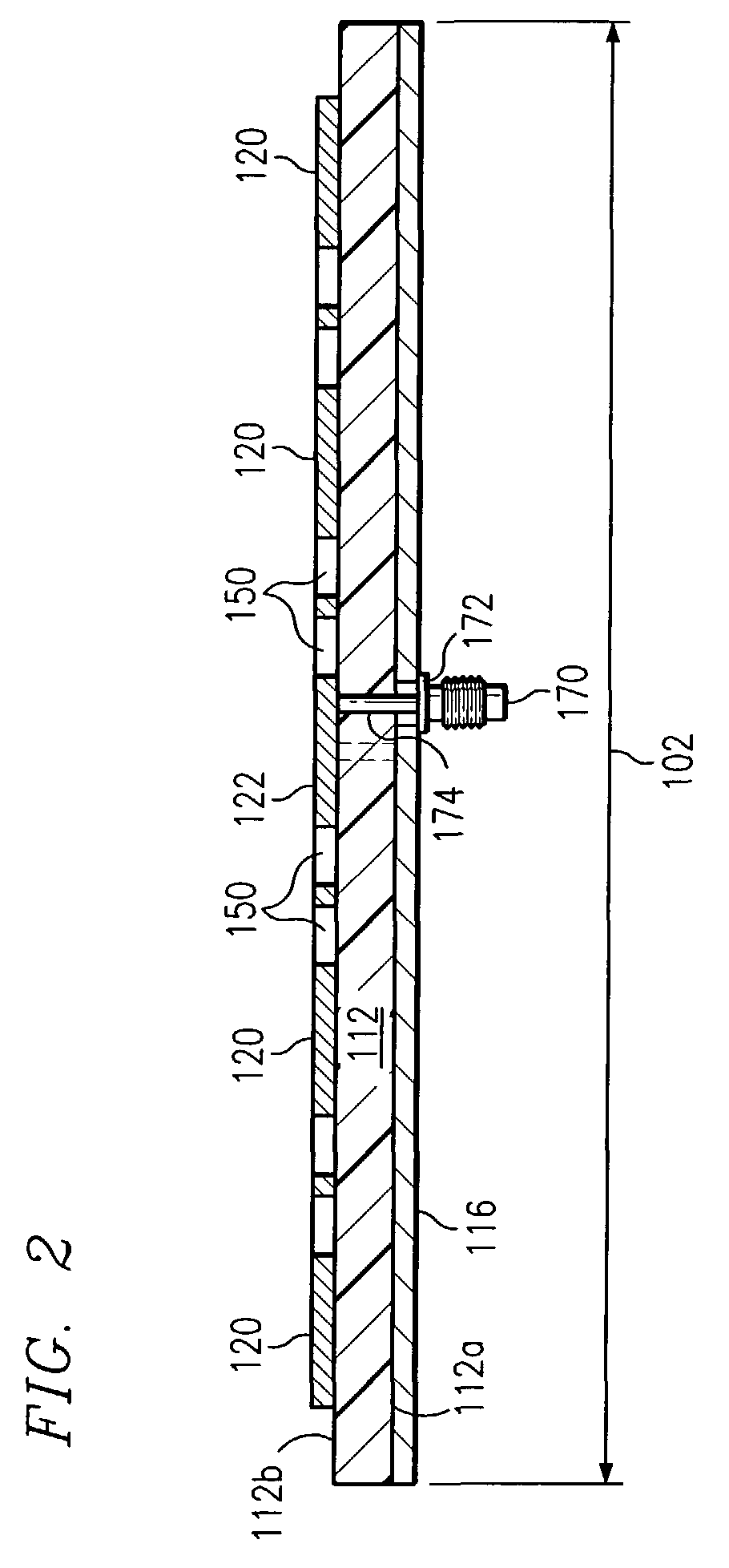Microstrip array antenna
a microstrip array and array antenna technology, applied in the field of microstrip array antennas, can solve the problems of reducing the aperture efficiency of a reflector antenna, and only having an aperture efficiency of about 55%, and achieves the effect of high aperture efficiency and easy adaptation
- Summary
- Abstract
- Description
- Claims
- Application Information
AI Technical Summary
Problems solved by technology
Method used
Image
Examples
Embodiment Construction
[0043]In the following discussion of the drawings, certain depicted elements are, for the sake of clarity, not necessarily shown to scale, and like or similar elements are designated by the same reference numeral through the several views.
[0044]Two types of antennas are described hereinafter. One is a linearly polarized antenna that has one feed for a single-mode operation. In this embodiment, crisscrossing or intersecting stripline conductors are not required and the structure is simpler. The other is a dual-mode antenna with two input feeds that are operational independently each other and has crisscrossing or intersecting stripline conductors connecting the patches to the feed connectors.
[0045]In the dual mode configuration, the antenna acts as two antennas superimposed. Such an antenna may use two feed terminals with the stripline conductors of one terminal being orthogonal to the stripline conductors of the other terminal. Each of the patches in the antenna are connected at one...
PUM
 Login to View More
Login to View More Abstract
Description
Claims
Application Information
 Login to View More
Login to View More - R&D
- Intellectual Property
- Life Sciences
- Materials
- Tech Scout
- Unparalleled Data Quality
- Higher Quality Content
- 60% Fewer Hallucinations
Browse by: Latest US Patents, China's latest patents, Technical Efficacy Thesaurus, Application Domain, Technology Topic, Popular Technical Reports.
© 2025 PatSnap. All rights reserved.Legal|Privacy policy|Modern Slavery Act Transparency Statement|Sitemap|About US| Contact US: help@patsnap.com



